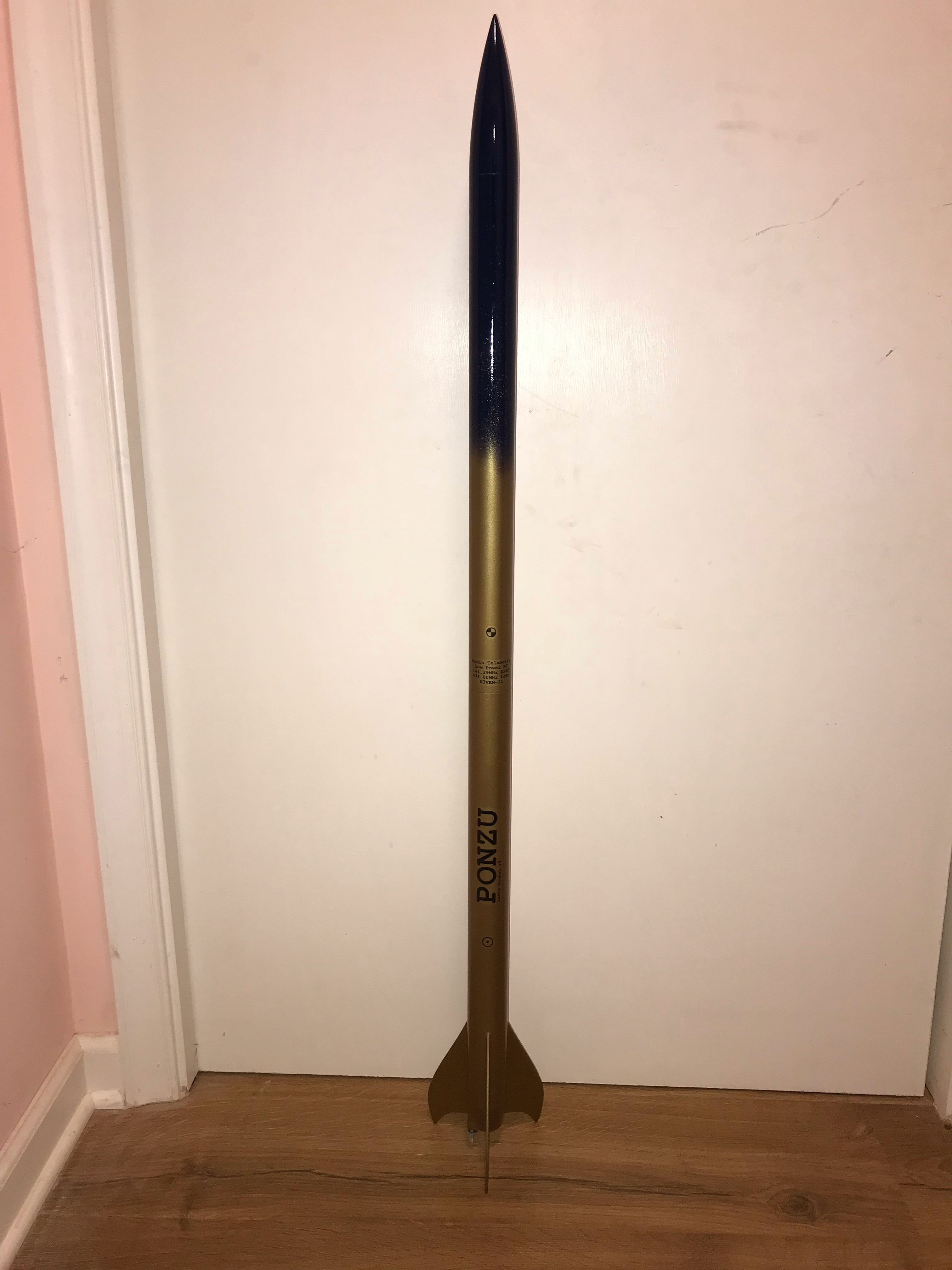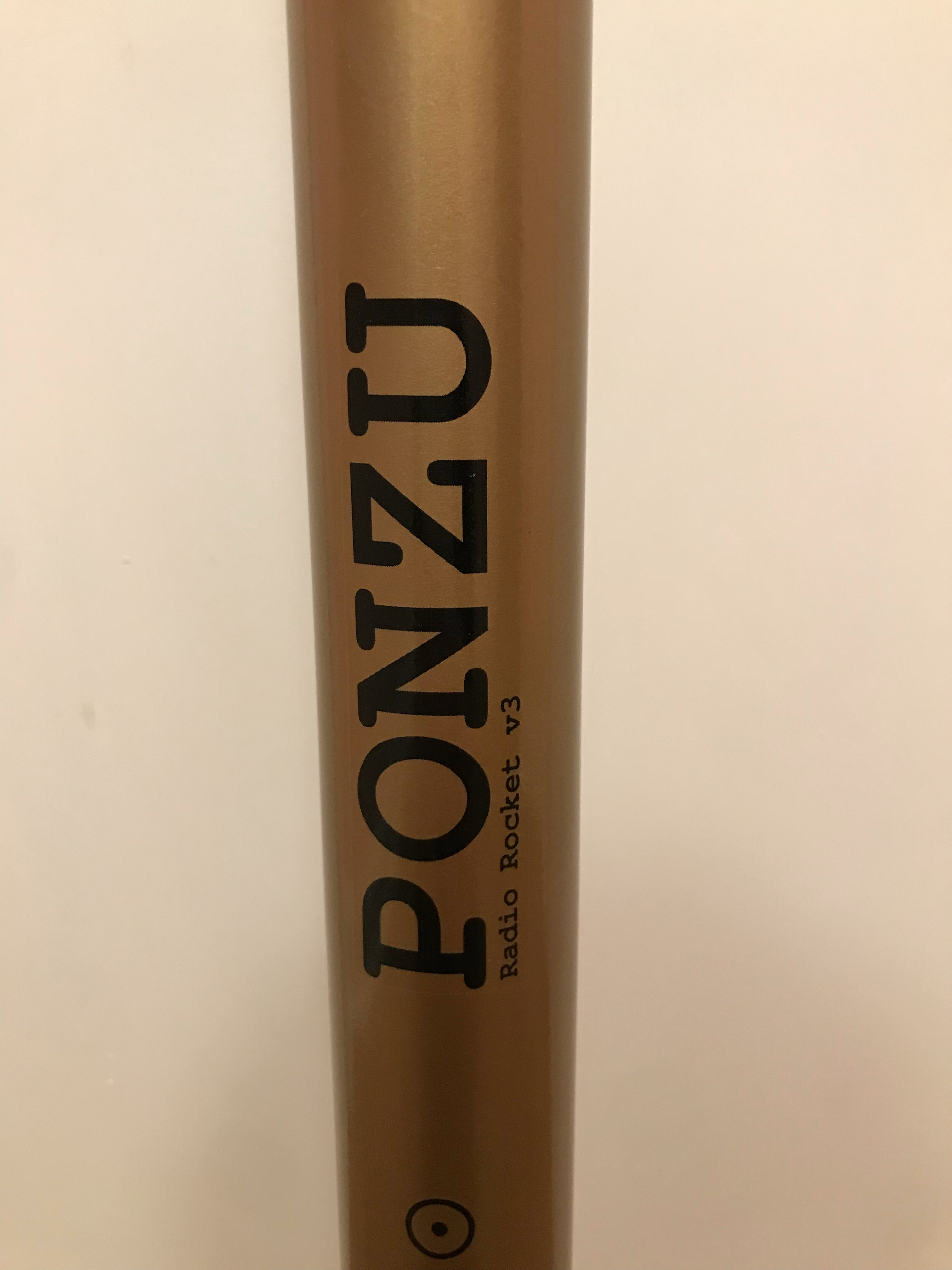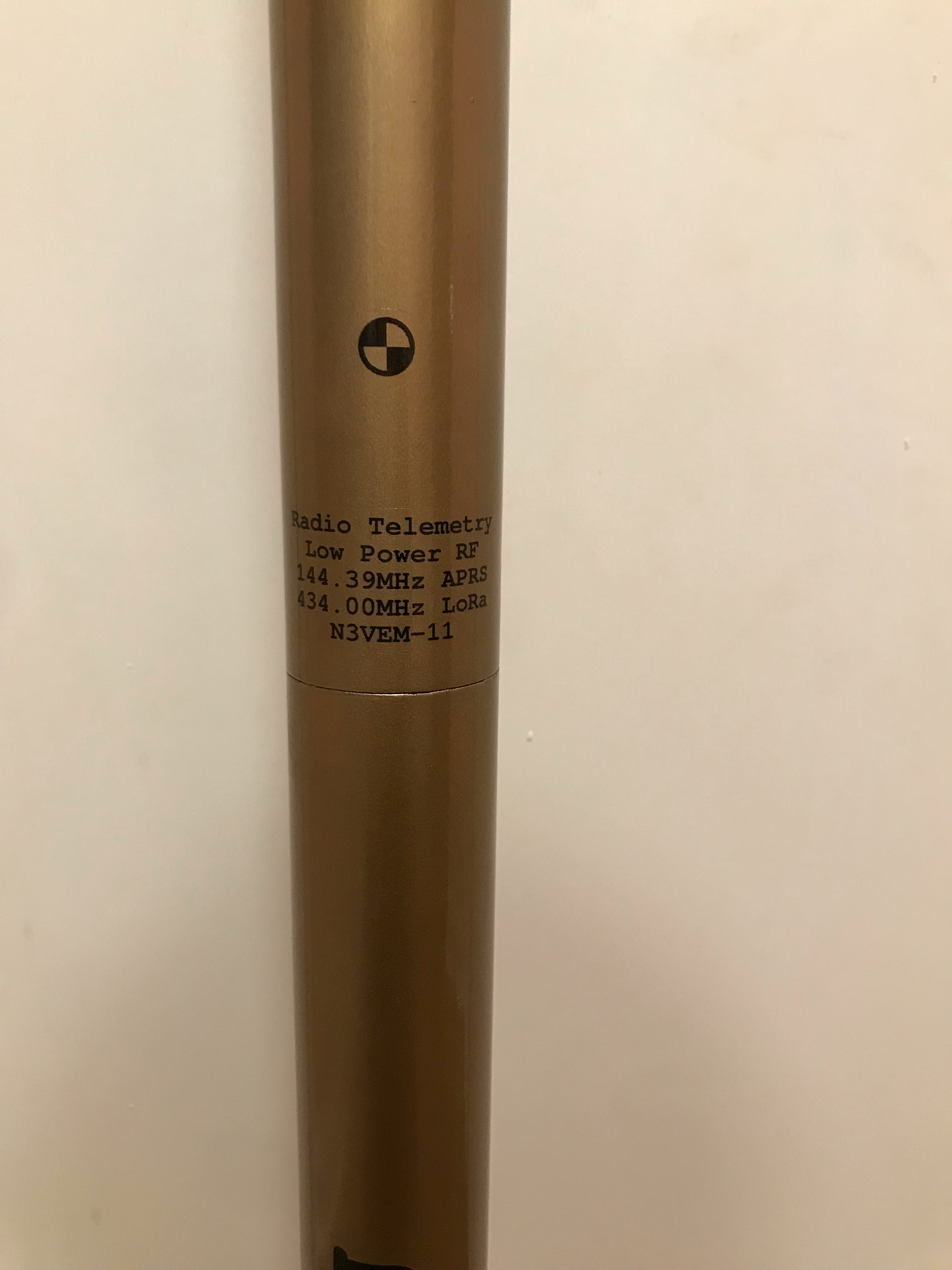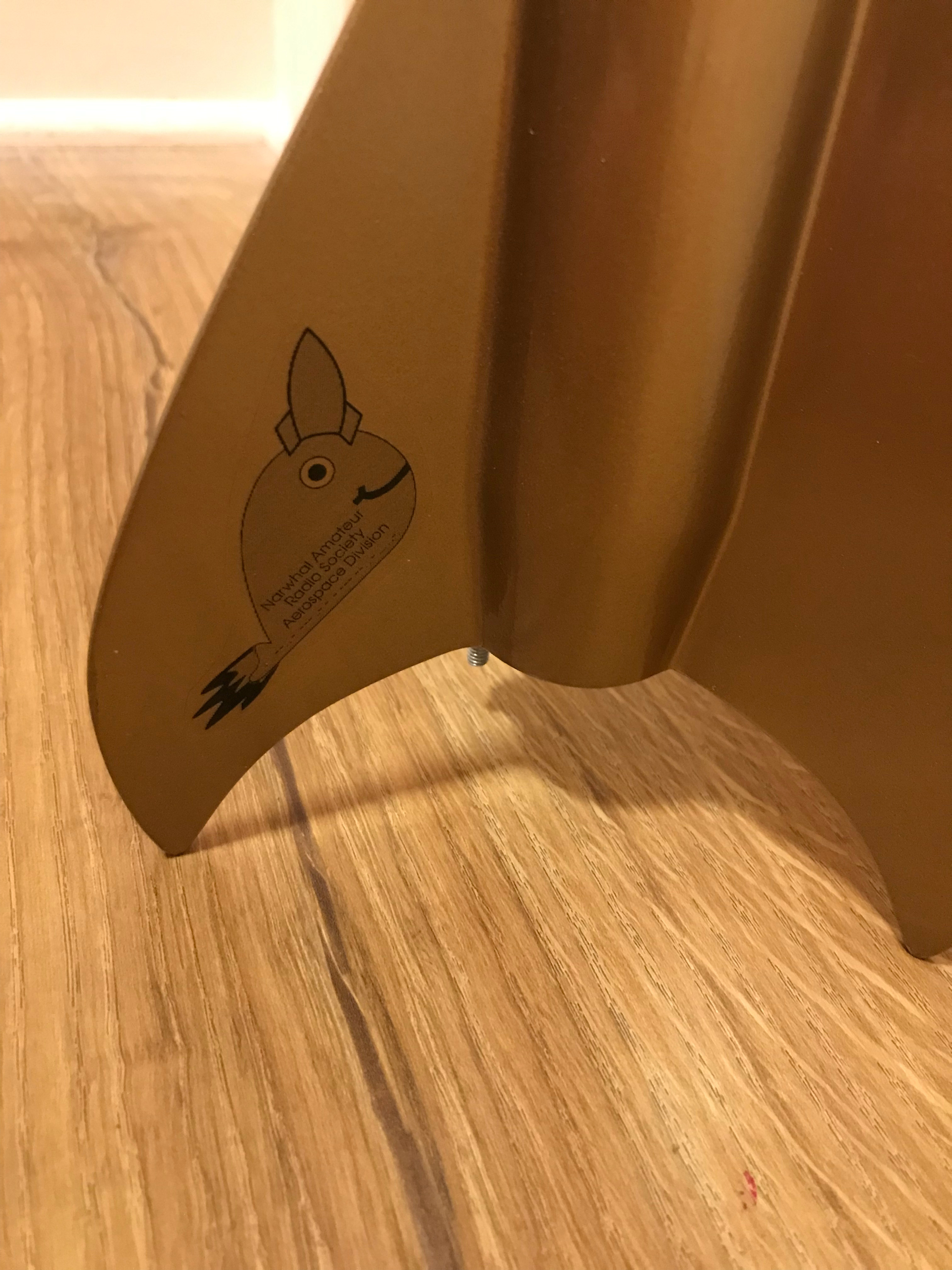Introducing Ponzu, Radio Rocket Version 3
Here it is folx - Radio Rocket Version 3, painted up, and officially named! We’ve been using sushi terms, in alphabetical order for our Radio Rocket versions. The letter P was up next, so we went with Ponzu, which is a sauce that is sweeter than traditional soy sauces. I think this is a pretty fitting name, because this rocket is absolutely sweeter than it’s predecessors. We started with an Apogee Kestral Kit, but replaced the stock 9” payload bay, with an 18” payload bay.
Radio Rocket Ponzu (v3)

Height: 109.86cm ; 43.25”
Diameter: 41.6mm ; 1.64” (BT-60 sized tube)
Weight, w/o Motor: 498g ; 17.3oz
Recovery: 30” parachute
Paint: Gold, fading to blue with a spattered fade
Telemetry: GPS data via APRS packets (no digipeating) on 144.39MHz, and magnetometer, gyro, acceleration, barometric pressure, altitude, and messaging via LoRa on 434MHz. Flight data will also be posted live to Mastodon via the ground station’s ‘auto-tooter.’ Receipt of flight updates via XMPP is available upon request.
The primary goal with version 3 of the rocket was to make everything smaller and lighter, so that we would be able fly faster and higher on the same motors. This worked out pretty well, because at 498 grams, it only weighs 39% of what it’s predecessor weighed. It is also 89cm shorter, which makes it much easier to transport, and handle while getting set up.
Based on current simluations with Open Rocket, we should be able to hit some more impressive figures with Ponzu than we did with Ohyo.
- On a G64 motor we should be able to hit
- 864 meters vs Ohyo’s 270 meters
- 154 meters/second vs Ohyo’s 64 meters/second
- 16G vs Ohyo’s 7G
For our first couple launches however, we’ll likely fly on either F20 or F42 motors, to keep altitudes in the 300 meter range, velocity in the 70-80m/s range, and max G force in the 8G-10G range.
Lastly, here are a couple detail shots of the rocket. I’m not an expert builder/finisher, but I am getting better at it, and some of these rockets are starting to look pretty decent :-)
Also, don’t forget to check out the final picture, which is derivative of the logo of one of the clubs I belong too - the Narwhal Amateur Radio Society.


